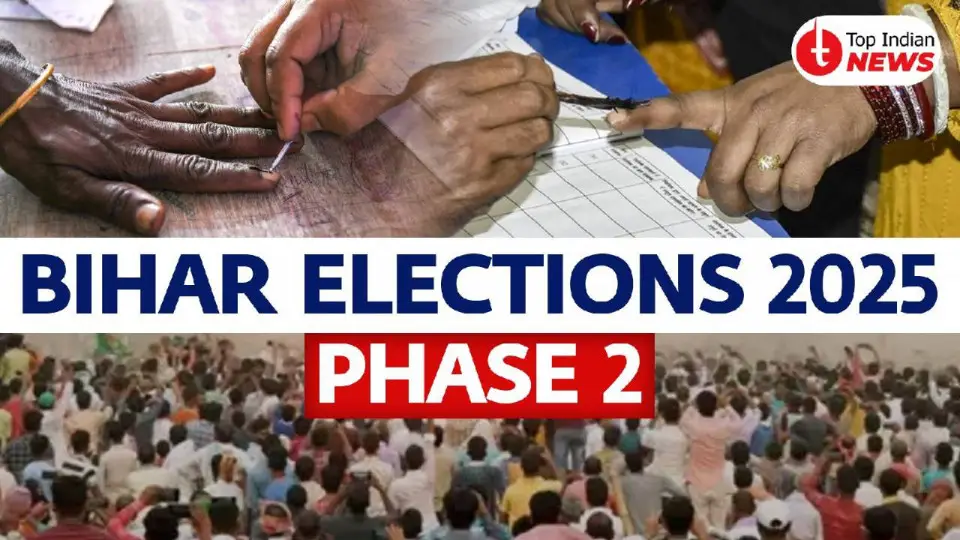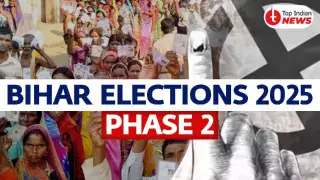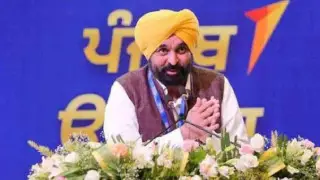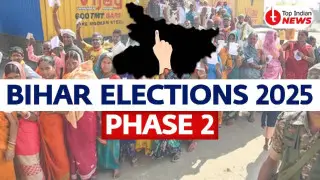
( Credit:TIN)
Bihar: The second phase covers 122 assembly constituencies where major parties are engaged in intense campaigning. Most of these seats lie in rural regions where issues like roads, power supply, healthcare and employment dominate voter discussions. Ground-level outreach has taken priority over large rallies. Candidates are meeting people at their doorsteps and listening to local concerns. The Election Commission is closely monitoring polling to ensure fairness. This phase is expected to heavily influence the final political outcome. All eyes are on voter turnout patterns and last-minute sentiment shifts.
Over four lakh security personnel have been deployed across the state to ensure peaceful polling. Nearly every booth has been marked sensitive or highly sensitive. Central Armed Police Forces have also been positioned to prevent any disruptions. Drone surveillance, mobile patrolling teams and quick-response units are operational throughout polling zones. Special arrangements have been made for women, elderly and first-time voters. The administration has clearly warned against any kind of violence or pressure on voters. Officials are aiming for a fear-free environment that encourages maximum participation.
A total of 1,302 candidates are contesting this round including ministers, ex-ministers and new contenders. Independent candidates have also turned several seats into close battles. Caste equations, local development records and personal reputation of candidates are playing crucial roles. Young leaders are aggressively using digital platforms to reach voters. Experienced figures are relying on earlier groundwork and personal connections. Voters are carefully evaluating every candidate this time. The final decision depends on trust, visibility and credibility at the grassroots.
Most seats in this phase fall in rural and semi-rural belts where daily livelihood concerns influence voter decisions. Farmers, laborers and small traders want concrete solutions to inflation, damaged roads and employment shortages. Local discussions in village courtyards and tea stalls are shaping the election narrative. Quiet opinion-building, not loud speeches, is driving voter choices. Winning here demands strong presence, trust and long-term engagement. The battle for rural confidence will decide who gains majority advantage. Parties understand that these regions hold the real political weight.
Women voters are expected to play a decisive role this time as turnout among them continues rising. Issues like healthcare, safety, ration supply and education weigh heavily on their choices. Self-help groups and community networks are influencing awareness and participation. Political campaigns have started tailoring promises and messaging specially for women voters. Leaders cannot ignore their voice anymore. Women are emerging as strong decision-makers instead of silent observers. Their vote may shift the final balance in multiple constituencies.
Urban centres show slightly different concerns focused on jobs, prices, transport and city development. Youth voters rely more on digital debates and online political messaging. Efforts are ongoing to improve polling turnout in towns and cities. Awareness drives are being held in colleges, offices and residential groups. Digital campaigning is louder here than traditional rallies. But ultimately, every vote requires physical presence at the polling booth. Whether urban turnout rises or stagnates may impact major party calculations.
Once voting concludes, attention will shift to counting day on November 14. Political analysts believe this phase could determine which alliance gains a decisive edge. Several seats are expected to deliver surprising outcomes. The final picture of government formation may depend highly on rural voting trends from this phase. Leaders are cautiously confident but aware of unpredictable voter swings. Bihar’s political future is now in the hands of its electorate. The state awaits the verdict of its people.













Copyright © 2025 Top Indian News
